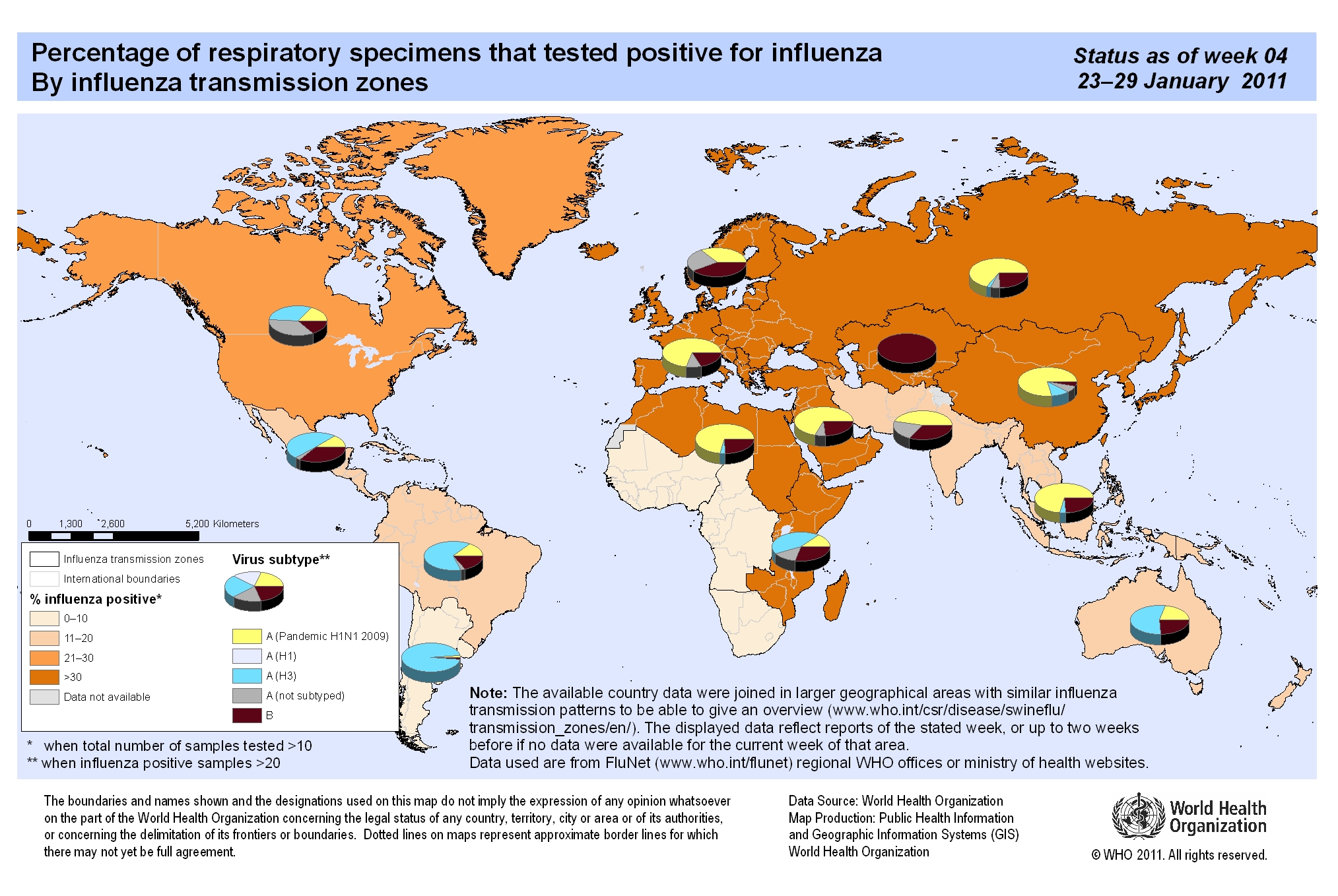
Percentage of Respiratory specimens that tested positive for influenza 23–29 January 2011 [Source: World Health Organization]
This map has grown out of the 5-Day BIRS workshop on "Modelling and analysis of options for controlling persistent infectious diseases" that was held at the Banff Centre in Alberta, Canada from 28 February to 4 March 2011.
A short overview of the field
Much attention today is directed to the scourges of newly emerging pathogens, and methods for their control. There remain, however, a resilient set of agents that have managed to cause high levels of mortality and morbidity in human populations for centuries, escaping elimination through spatial and temporal fluctuations, and evolutionary adaptation. The only such "endemic" pathogen to have been eliminated by human efforts is smallpox, and the eradication of smallpox was a major achievement of the 20th century.
A number of damaging infections (e.g., polio, measles, mumps, rubella, whooping cough) have been mostly eliminated in large parts of the world (typically by vaccination) but remain persistently endemic (or resurgent) in several areas. Other infections, including malaria and tuberculosis, have been controlled in many areas by public-health measures, but continue to cause widespread morbidity and mortality over large parts of the world. Still other infections, including influenza and HIV, continue to largely defy control through vaccination and public-health measures and cause morbidity and mortality throughout the world.
Different pathogens are transmitted differently and show different evolutionary patterns, necessitating different modelling approaches. For example, childhood respiratory infections, such as polio, measles and whooping cough, generally confer long-term immunity and can be successfully modelled with traditional SIR-type models. Malaria involves an essential life-stage in the mosquito vector, and has more complex interactions with acquired partial immunity. HIV is transmitted primarily sexually, requiring careful consideration of the effects of sexual partnership networks. Influenza has the ability to evolve antigenically novel variants, and thus displays complex interactions with patterns of host immunity.
For over a century, mathematical models have made important contributions to the understanding and control of infectious diseases. However, much more remains to be done, both theoretically and practically. New computational and mathematical tools, including greatly enhanced ability to compare analytical models with detailed individual-based simulation models, make this an excellent time for new mathematical and public-health innovations in this field.
Tag››